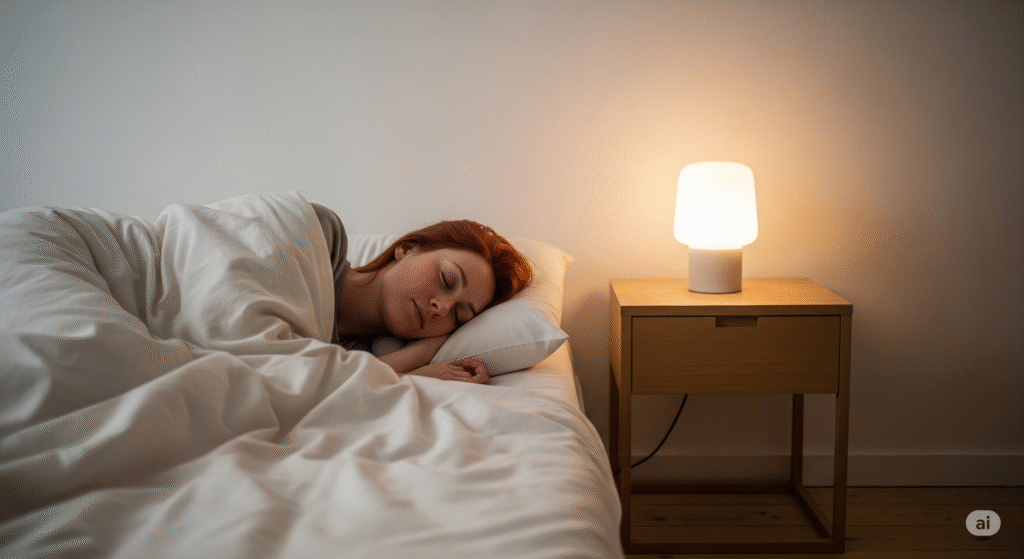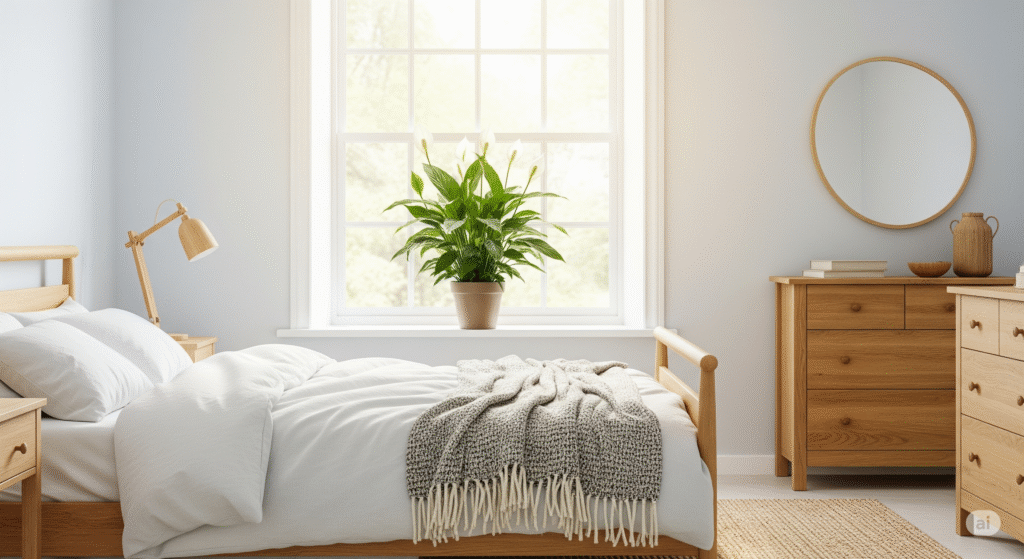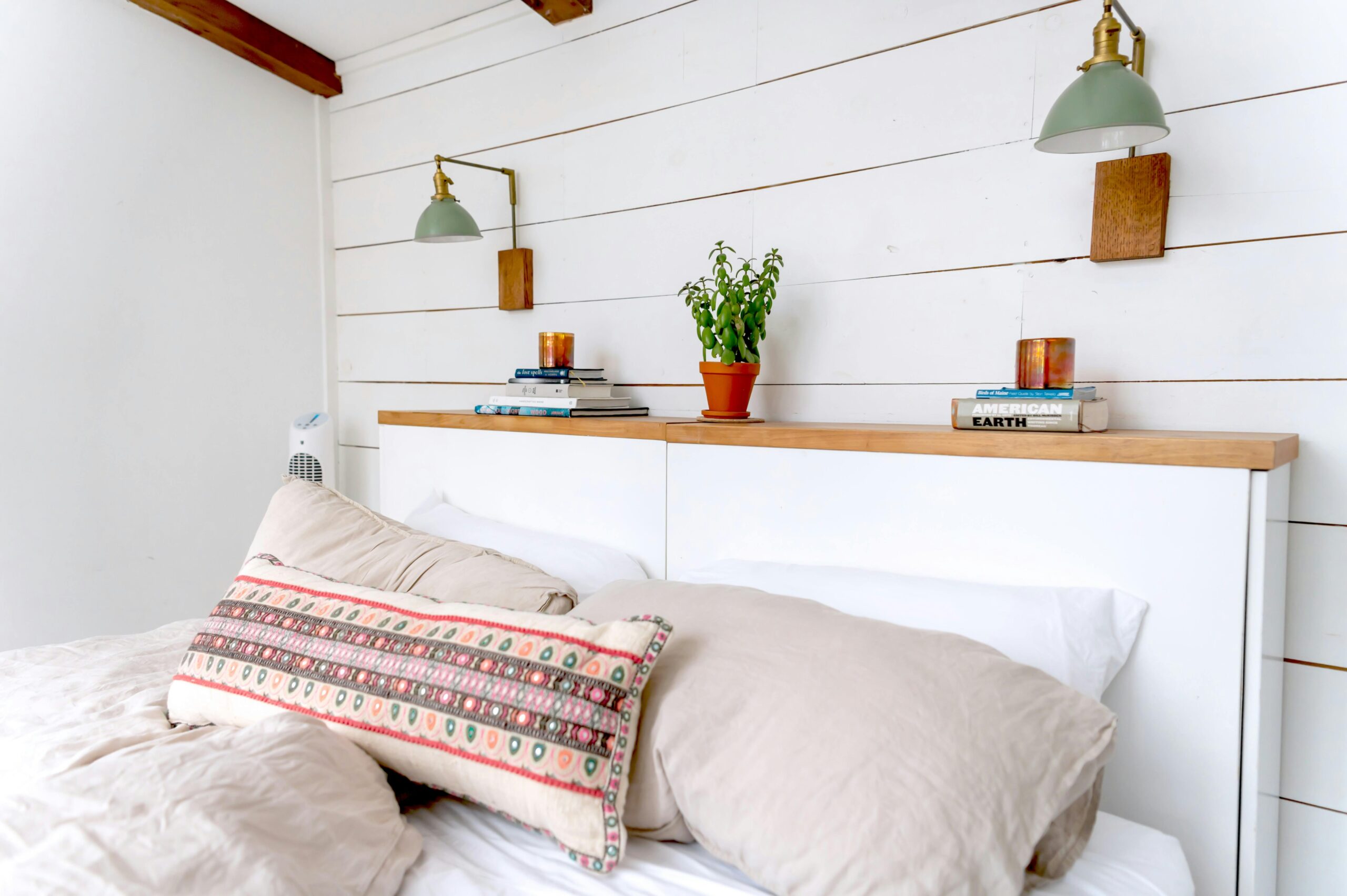Calm Bedrooms: How to Get Peaceful Sleep with Simple Style in 7 Points
Creating a calm and restful bedroom is more than just choosing a good mattress—it’s about setting the right mood, style, and environment that helps your mind and body relax. A thoughtfully designed bedroom can make falling asleep easier, improve sleep quality, and help you wake up refreshed.
In this article, we’ll cover 7 simple yet powerful styling tips to turn your bedroom into a peaceful retreat where sleep comes naturally.
1. Choose a Soothing Color Palette

Colors affect mood deeply. In a bedroom, loud or overly bright tones may feel energizing, but they won’t help you rest. Instead, focus on soft and soothing shades.
- Best calming colors: soft blues, muted greens, warm neutrals, beige, and lavender.
- Keep walls light and muted for a spacious, airy effect.
- Add depth with textured fabrics in the same palette (linen curtains, cotton throws, or neutral cushions).
👉 Pro Tip: Avoid strong reds and oranges in the bedroom, as they’re linked with energy and stimulation rather than calm.
2. Invest in Comfortable Bedding
Your bed is the centerpiece of your sleep sanctuary. High-quality bedding can instantly transform the feel of your bedroom.
- Opt for breathable fabrics like cotton or linen for sheets.
- Layer with soft throws and plump pillows for comfort.
- Stick to neutral or soft-colored bedding to maintain harmony.
👉 Pro Tip: Change bedding seasonally—lightweight fabrics in summer, cozy and warmer textures in winter.
3. Declutter for a Clear Mind

Clutter in your bedroom translates to mental clutter. A minimalist approach creates more space for relaxation.
- Keep bedside tables free of unnecessary items.
- Use storage boxes or under-bed drawers to keep things organized.
- Keep only essential furniture pieces—bed, bedside tables, and a dresser.
👉 Pro Tip: Adopt the “one in, one out” rule—when you add something new, remove something old to prevent buildup.
4. Add Layers of Soft Lighting
Lighting sets the tone of your bedroom. Harsh overhead lighting can feel too bright, while layered, soft lighting helps the body wind down.
- Use warm-toned bedside lamps.
- Add dimmable bulbs to adjust brightness in the evening.
- Consider fairy lights or soft LED strips for a cozy glow.
👉 Pro Tip: Avoid blue light exposure from screens an hour before bedtime—keep a “no phone” rule in bed.
5. Bring Nature Indoors

Nature has a calming effect on the mind. Adding greenery to your bedroom helps create a peaceful environment.
- Use low-maintenance plants like snake plants, peace lilies, or lavender.
- Place small potted plants on window sills or shelves.
- Consider nature-inspired artwork if plants aren’t an option.
6. Create a Scent and Sound Ritual
Engage your senses to promote relaxation before sleep. Scents and sounds can help signal your body that it’s time to rest.
- Use essential oils like lavender, chamomile, or sandalwood in a diffuser.
- Try calming soundscapes—gentle rain, ocean waves, or soft instrumental music.
- Keep noise levels low with blackout curtains or a white noise machine.
👉 Pro Tip: A simple bedtime ritual (reading, meditating, or stretching) reinforces the body’s natural sleep cycle.
7. Personalize with Simple Style
A calm bedroom doesn’t mean a lifeless one. Personal touches make the space feel truly yours while keeping the environment serene.
- Hang one or two calming art pieces instead of many small ones.
- Use natural textures—wooden frames, woven baskets, linen curtains.
- Keep decor minimal but meaningful—family photos, a favorite book, or a small sculpture.
👉 Pro Tip: Stick to the 60-30-10 rule—60% base color, 30% secondary shade, 10% accent color.
Get Fresh Looks for Your Living Room in 2025
Final Thoughts
A calm bedroom is not about spending thousands on new furniture—it’s about thoughtful choices that balance style and function. By focusing on soothing colors, comfortable bedding, soft lighting, decluttering, and personal touches, you can create a space that truly supports restful sleep.
FAQs on Calm Bedrooms and Better Sleep
Q1: What color is best for a calming bedroom?
Soft shades like light blue, green, beige, or lavender are ideal for creating a restful atmosphere.
Q2: Do plants really help in a bedroom?
Yes, indoor plants can improve air quality and add a natural, calming touch to your space.
Q3: How do I make a small bedroom feel calmer?
Keep it clutter-free, use light colors, add mirrors for space illusion, and avoid oversized furniture.
Q4: Is it better to keep electronics out of the bedroom?
Yes. Screens emit blue light, which interferes with melatonin production and disrupts sleep.
Q5: How much light should a bedroom have at night?
Minimal, warm-toned lighting is best. Avoid bright or white lights before sleep.
